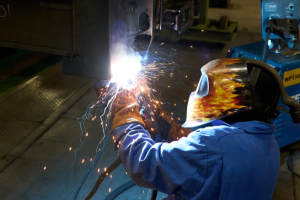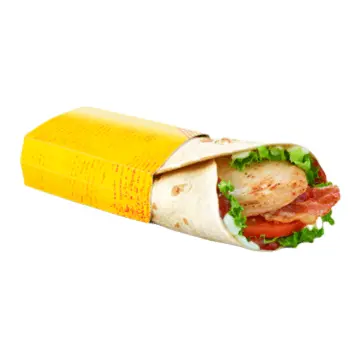How to Flim Flam Core Welding Flux Wire Step-by-step Guide
Aluminum presents many challenges for welding: its lower melting temperature and higher thermal conductivity mean that the aluminum needs to be substantially hotter than the steel, but will cool a lot faster as well. Yet, this is entirely achievable with the proper tools and methodologies.
Note: Discover the best stainless steel welding wire with us! As an authorized dealer of all major brands used by professionals, we offer the largest stock of welding supplies. Visit our website at https://www.udo.co.th/product/detail/yawata-316l-16 to explore our products or seek expert welding advice from our specialists. Don’t miss out on the highest quality and availability in the market!
The flux core welding wire has been one of the techniques which are on top in popularity among hobbyists as well as pro users. This essay will detail the ways of a successful and safe welding process when you use flux core wire to weld aluminum.
Introduction of Flux Core Welding Wire
Flux core welding wire is a type of filler material used in the process that contains flux compound inside it. The flux serves to protect the weld from oxidation and other contamination, thus eliminating the need for an external shielding gas. This makes flux core welding wire a very suitable thing to use for any outdoor weld or anywhere where wind could interrupt the flow of your shielding gas. Although, using flux core welding wire with aluminum is not very common as in the case of steel; but it can turn out to be useful if followed correctly through a proper process.
Preparing for Welding
- **Acquiring Supplies and Gear**:
Before You Begin – What To Prepare Beforehand This means you will also need aluminum flux core welding wire, a compatible MIG-welding of your thin-gauge sheets with an equally appropriate stick-out, and standard safety equipment such as gloves, protective clothing including helmet. It is essential that your welding machine should be compatible with flux core welding wire and also support aluminum welding.
- Cleaning the Aluminum Surface
Aluminum requires an extra cleanness before welding it because it forms oxides and will have contaminants in the weld. Scrub the place of welding with wire, a stainless steel brush for aluminum parcels. Acetone or another appropriate cleaner can also be used to ensure the surface is free of oil and dirt.
Step 1: Setting The Welder Up
- Choosing the Right Wire
Fabricate with the right flux core welding wiregetAttribute : valve in dubaiChoose the most acceptable flux center welding twine for aluminum. For achieving a more constant and clean weld, you will want to select an aluminum flux core wire that is formulated for all the properties of this material.
- **Change in Machine Settings**:
Install the aluminum flux core welding wire, and set up the welder at the right configuration for that. Normally, this means that voltage and food to speed are varying. When it comes to aluminum welding, you will generally need more voltage and a higher wire feed speed compared with steel. Make sure to have your machine set up for DCEN (Direct Current Electrode Negative) when welding with flux core.
Welding Process
- **Workpiece innovation: **
Clamp the aluminum molds you would like to join securely. Make sure these are in line properly so that there will be no distortions during the welding process. For thin pieces, you should use a backing strip to help stabilize the weld and prevent burn-through.
- **Initiating the Weld**:
The weld can be started by either strike an arc A slight angle, usually around 10-15 degrees from vertical is best; the nozzle should be close to flushed and have a steady travel speed. Consistency in speed and keeping the nozzle at a consistent distance from your work piece is key to good welds.
- **Managing the Weld Pool**:
Note: Weld pool must be monitored closely Aluminum produces a wider and shallower weld pool compared to steel, so it is critical that you control the heat input not burn-through. If necessary, weave in the flat position to keep a uniform heating of the weld joint and produce a better structure.
- **Completing the Weld**:
When the weld is performed, let it cool slowly. I hope it goes without saying that you avoid quenching with water, which provides little chance of being shattered into various pieces. Examine the weld for defects, consisting of porosity or cracking, deficiency melting Lastly, if needed you just have to go over a touch-up or even make extra passes for this in order to give it a proper weld.
Post-Weld Considerations
- **Cleaning the Weld**:
Once the welding is cool, use a wire brush to clean any remaining flux residue from the weld area. A wire brush, or grinder. Good cleaning will make the weld strong for a longtime.
- **Inspecting the Weld**:
Inspect the weld thoroughly until it reaches the quality that you aim for. Inspect for defects and repair any areas that need attention. Ensuring that the weld is checked properly, especially if it involves a structural part of an aluminum piece.
Conclusion
When welding aluminum with flux core wire specific techniques must be followed to produce a sound weld. With the right FLUX-CORED ALUMINUM WELDING WIRE FOR YOUR PROJECT, a complete cleanup on an aluminum surface and proper welding skills as backing up for high-quality workmanship you can positively Weld Aluminum. In addition, such a method would offer an enduring and practical option that is well suited to outdoor or remote locations where the use of conventional shielding gasses may not be feasible. So, keep that in mind and then come back down to practice (glad you knew) closely followed by attention to detail which translates into vigilant clean welding.






